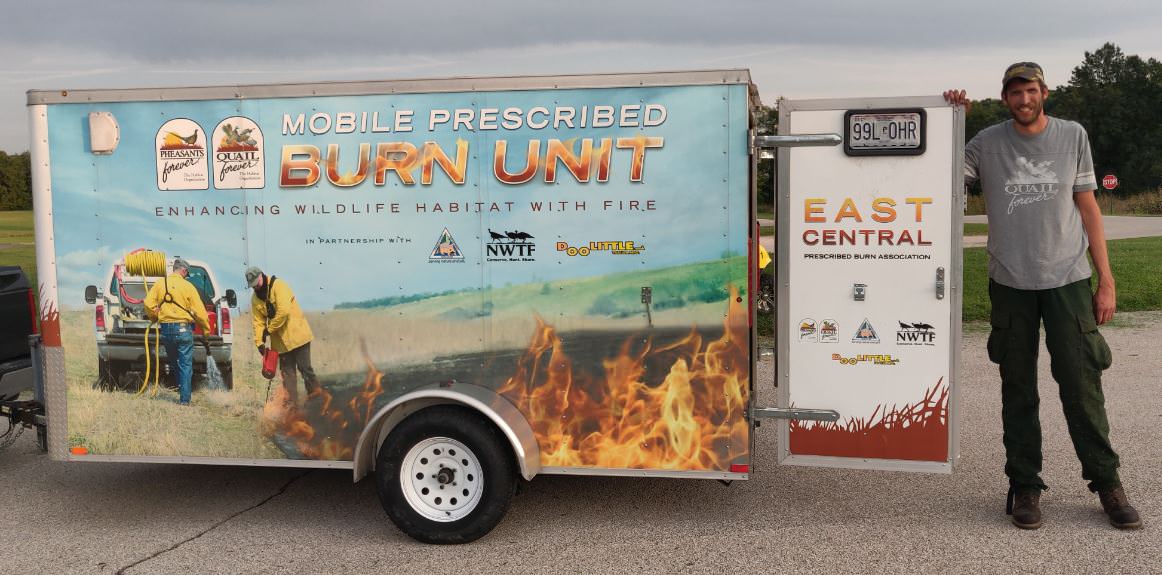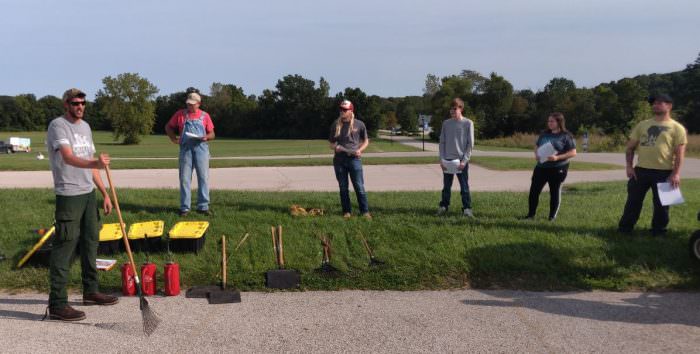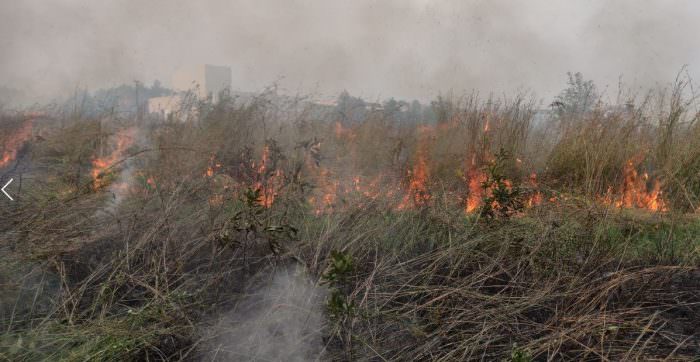
A “Burning” Desire to Save Quail and Pheasant Habitats at ECC
Chances are good that if you’ve spent much time outdoors you’ve heard the familiar “Bob White!” call of a male quail courting the hens in the area and staking out his boundaries.
Unfortunately, the opportunity to hear those calls has become much less common, to the point that there may be no quail left in many areas where they once were often heard.
As we build more homes and expand farmlands to meet the food demands of expanding populations, wildlife has suffered the consequences the most. That’s where non-governmental organizations, like Quail Forever and Pheasants Forever in Missouri, become so important.
Pheasants Forever (PF) was founded in 1982 by dedicated outdoor enthusiasts to preserve pheasant populations by improving habitats and educating the public. A group of those concerned pheasant hunters saw the connection between declining populations and habitat loss.
They also saw that quail populations were dwindling across the country from those same issues, and Quail Forever (QF), a branch of PF, began in 2005. Efforts in conserving those bird populations are still at work today where PF/QF works diligently in most of the U.S. and parts of Canada, including Franklin County.
While habitat management and restoration are integral to wildlife management, habitat improvements have benefits to many other non-game species. Many of the wildflowers and grasses that serve as food and shelter for quail are also essential as food sources for multiple species of pollinators, giving benefit to a wide range of species in our local ecosystems.
According to the Missouri Department of Conservation (MDC), nearly one-third of Missouri, including approximately 40 percent of the St. Louis metropolitan area, was prairie before westward expansion and settlement began. Today it is estimated that less than 0.5 percent of those original prairies remain.
Efforts in prairie restoration have been done in many areas of the state and nation, including at the campus of East Central College in Union.
In the early 2000s, Dr. Pat Woolley, ECC Professor Emeritus of Biology, worked with MDC, Shaw Nature Reserve and the U.S. Fish and Wildlife Service to restore nearly 10 acres of property on the campus to tall grass prairie. Seeding of the prairie in native warm season grasses and multiple forbs (including many species of wildflowers that are native to the area) was done, and in only a few short years the project came to full maturity.
Several species of grasses and over 30 different wildflowers have been documented in the most intensively managed plot, a 4.5-acre section of land just off the college’s main drive, with a second plot of approximately 4.6 acres near the college’s training center.
These plots support many animal and insect species including many types of bees which are essential to crop and food production. Multiple butterfly species also call the plots home.
After Dr. Woolley’s retirement, management of the now-mature prairie fell to members of the ECC Biology department. In 2008, Kevin Dixon, associate professor of biology, took on the responsibility of managing the areas.
Dixon’s interest was spurred by his love of photography where he would take pictures of the wildflowers and pollinators throughout the blooming season from May through September annually.

In 2013, Dixon noticed that non-native Fescue and Sericea Lespedeza, an invasive species, were beginning to proliferate in the plots. With the help of biologists from MDC, a formal management plan was developed and a late-season prescribed burn was conducted in November 2015.
While the burn did accomplish two main objectives – the ridding of previous years’ thatch and setting back the invasive species – it had an unexpected result of boosting the growth of the tallest grasses, namely Big Bluestem and Switchgrass. This began to choke out the some of the wildflowers throughout the plot.
Another prescribed burn was needed to control the grasses, and the timing lined up well with the original management plan of burning every five years, so Dixon began to look for helping hands to conduct a burn.
Enter Quail Forever & Pheasants Forever
A local landowner who is a member of PF/QF suggested to Dixon that he contact Wesley Hanks, who is the local PF/QF farm bill biologist. Hanks, a Franklin County native and an ECC alumnus, works with landowners in Warren, Franklin, and Washington counties, helping develop and maintain wildlife-friendly habitats, especially those that will benefit quail and other species of both game and non-game animals.
In early 2021, Hanks and Dixon met at ECC to discuss plans for a prescribed burn. Hanks, a technical advisor for the East Central Prescribed Burn Association (ECPBA), felt confident a burn could be conducted, and recommended doing so near the end of the growing season in early fall to bring back some of the lost diversity in the wildflowers and slow down the ever-thickening grasses.
According to the group’s Facebook page, “The ECPBA is a landowner-led group to conduct and promote the safe use of prescribed fire in Franklin and surrounding counties in East Central Missouri.”

These landowners are volunteers who share a passion for habitat management on behalf of wildlife, especially upland game birds like quail and pheasants. The ECPBA was organized in 2015 in cooperation with MDC, the National Wild Turkey Federation, and the Missouri River Valley Chapter of Quail Forever in Washington. The group obtained a grant to purchase a trailer and burn equipment to conduct prescribed burns.
Hanks contacted members of the ECPBA who gave their approval, and final planning began. On Sept. 24 the second-ever prescribed burn on the restored prairie plot was conducted at the college
There were 13 who turned out to do the burn, including five ECPBA members and four students from ECC’s General Ecology classes, who got hands-on experience with what it is like to use fire for the benefit of habitat management.
The entire procedure took a little over two hours from start to finish, with nearly all the downed thatch turned to beneficial ash which will provide much needed nutrients to subsequent years’ growth.
If you are interested in learning more about Quail Forever and/or joining the local chapter you can visit missouripfqf.org. If you are interested in learning more about and/or joining the ECPBA you can contact Wesley Hanks at whanks@quailforever.org or 636-649-3108.

